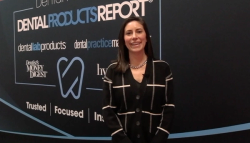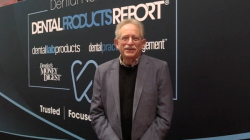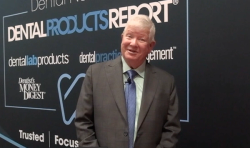- About Us
- Advertise
- Editorial
- Contact Us
- Terms and Conditions
- Privacy Policy
- Do Not Sell My Personal Information
© 2025 MJH Life Sciences™ and Dental Products Report. All rights reserved.
The latest and greatest trends in cosmetic dentistry
The past decade has been a remarkable time for cosmetic dentistry. The profession has advanced on several fronts, including exciting new materials and technologies.
The past decade has been a remarkable time for cosmetic dentistry. The profession has advanced on several fronts, including exciting new materials and technologies.
But, thanks to a sluggish economy, it has also faced challenges. However you look at the past 10 years, cosmetic dentistry has been – and likely will continue to be – an exciting field, rich with rewards for its patients.
Getting better
On the materials front, there has been a movement away from metal-based restorations toward all-ceramics. That move has meant both better esthetics and performance.
“We’ve been able now to, in virtually all cases, change smiles using all-ceramics-no more metals-with beautiful results,” says Dr. Jack Ringer, DDS, a general and cosmetic dentist in Anaheim Hills, Calif. “There are a couple of new ceramics, particularly e.max, that came out and are just taking the world by storm, so the big thing in the materials world is ceramics.”
Free on-demand webinar: Understanding medical billing and its relationship with 3D
While procedures and equipment have changed and evolved over the past decade, the overall trend has been improvement in service delivery.
“I’ve felt like we’ve been on the cutting edge of what’s being done,” says Dr. John Sullivan, DDS, a general and cosmetic dentist in Tulare, Calif. “There’s been a huge evolution to a different form of treatment planning. What I think you’re seeing now is a lot of minimally invasive dentistry and treatment planning that includes specialists in the form of periodontists and orthodontists.”
The inclusion of specialists, along with advancements in materials and techniques, allows doctors to be less invasive than they were in the past.
“It used to be to put in a PFM restoration, I had to take off 1.5 mm of tooth structure,” Dr. Sullivan says. “Well, what happens if we can just go with bonded porcelain? As the technology increased with our ability to bond porcelain to tooth structure, it allowed us to start being more conservative. The other issue that really helped speed that up is the use of certain materials. We find some of the newer materials are much stronger than they were in the past at a very thin thickness.”
Continue to Page 2 to read more ...
Being conservative in one’s approach is not just the attitude of a few cosmetic dentists-the American Academy of Cosmetic Dentistry (AACD) adopted a policy of being minimally invasive.
“Members of the American Academy of Cosmetic Dentistry stand for the practice of responsible esthetics,” the AACD website reads. “AACD also strongly encourages that cosmetic dentistry integrate interdisciplinary medical and dental treatment to enhance outcomes and minimize the loss of healthy human tissue. That means AACD member dentists champion and provide minimally invasive treatment protocols, when and where appropriate, to ensure they are consistent with the long-term health and needs of the patient.”
To a certain degree, cosmetic dentistry has evolved to be more comprehensive in terms of care, tending to even more of the patient’s needs.
“We always talk about the white, the pink and the black,” Dr. Ringer says. “White being the tooth, pink being the gums and black being where missing teeth are. For decades, we’ve been focusing on the white, a little bit on the pink and a little bit on the black. In the last decade or so, there’s not a lot more attention on handling and treating the black and the pink, and that’s with really good implant placement and gum surgeries.”
Digital dentistry
The introduction of CAD/CAM to the cosmetic dentistry world has been another game-changing event. Digital dentistry brings efficiency, accuracy and improved esthetics.
“With the digital world, being able to use software and computer simulations to design smiles, to give patients’ previews-that is not used as much as it should be, but that is something that has developed more,” Dr. Ringer says. “There’s a lot more now using machinery to do stuff instead of humans, both chairside and in the laboratories, which is a helping hand in the esthetic world.”
Related reading: Dr. Flucke talks about "how digital dentistry works"
Continue to Page 3 to read more ...
CAD/CAM is comprised of several components-from the initial stages of scanning the patient’s mouth to designing the restoration to finally producing it on a mill. Where the doctor is with his or her involvement in CAD/CAM differs from doctor to doctor. Some may complete the entire case in-house, while others may just do the initial steps and then send it to a lab for completion.
“Oftentimes, to go from start to finish takes a lot of chairtime so you have to have a facility that’s set up where you have chairs available to do it,” Dr. Sullivan says. “If you’re not doing it yourself, you have to have a highly trained staff. In my incidence, what works best for me is to actually use a digital scanner to get our impressions then turn it over to really qualified lab people.”
Each doctor has his or her own reasons for his or her place in the CAD/CAM cycle. For some, it is an issue of money. For others, the quality isn’t quite there yet.
“My practice, right now, doesn’t justify it, but, still, for the esthetic work, the final product can’t be completed in my mind yet, not for a long time, without ceramists,” Dr. Ringer says. “There are plenty of machines out now that will mill out a veneer, or a crown in the front, and a patient may feel that’s fine, but it’s not at the standard that I want for my patients. They’re too generic and too monochromatic so I need a ceramist to layer ceramics, and no machine does that yet.”
Related reading: CAD/CAM ... Having it all ... your way
The economy
The bombshell that affected every industry in the past decade was undoubtedly the economy.
“The economy affected everybody,” Dr. Sullivan observes. “I’ve yet to meet a dentist who can really say the downturn in the economy in the past five or six years had not affected them. For a while, people were using their homes like ATM machines. It was not a big deal to take out a second mortgage and go out and have a full-smile makeover.”
When the economy declined, patients still came in, but they weren’t seeking extensive treatments anymore.
“We saw a lot more bleaching and teeth whitening,” Dr. Sullivan says. “That’s a very inexpensive way for people to get a better appearance. You would find instances where you were doing more composite bonding than you might have done in the past with the idea that you could improve the smile there; not having the longevity of a porcelain restoration but still having a very nice result that the patient would be very happy with.”
Sullivan found that, with good treatment plans in place, patients still came back when the economy rebounded.
“A lot of us found ways to ride it out by doing good, comprehensive treatment planning,” Dr. Sullivan adds. “When the patient was ready, he or she was coming back in so you still love the patients the best you could. You still took care of them the best you could. Oftentimes, the patient didn’t do it right then, but, somewhere down the road, almost all of them would come back in and have the treatment done.”
Related reading: From 1 to 50, the best and worst states to work in a dental practice
Continue to Page 4 to read more ...
Well educated patients
Not all trends in cosmetic dentistry have been on the clinician’s side. Patients have also changed the way they interact with the doctor-and for the better.
“Patients are really starting to understand the concept of minimally invasive dentistry,” Dr. Sullivan says. “They really don’t want their teeth cut down so they’re much more responsive to things like Invisalign and rapid orthodontics, such as Six Month Smiles, because patients want their teeth straighter, but where they were more willing to sacrifice a lot of tooth structure to get it, I think now they’re being much more conservative.”
“Because of the Internet, people are starting to do a lot more research, and they are finding out more and more about processes and techniques and materials before they are committing to work,” Dr. Ringer observes. “I think that’s going to continue to help elevate the standard. They’re not just going in blindly and accepting what they get. There are a lot more people demanding stuff before they do it, and I think that’s going to continue to grow.”
Webinar series: How to build the most successful Invisalign practice
The benefit of well informed patients is that doctors can have more productive discussions before any work is done, which allows them to get exactly what they want.
“Oftentimes, what you’ll find is, if you really sit down and talk with patients about what their wants are, you find out that you’re going to have to be a little bit more aggressive,” Dr. Sullivan says. “As you’re reviewing what their wants are, you can show them what direction you can take and then are also are able to educate them.”
“I think the vast majority are coming in with good questions and enough information that they can ask some of the right questions without just accepting something,” Dr. Ringer says. “The research on the Internet with people helps a lot. I prefer, when I’m having a conversation with the patient about techniques or anything, that they have some kind of basic understanding. It really helps the whole process of communication.”
Webinar: Increase case acceptance with patient education systems



